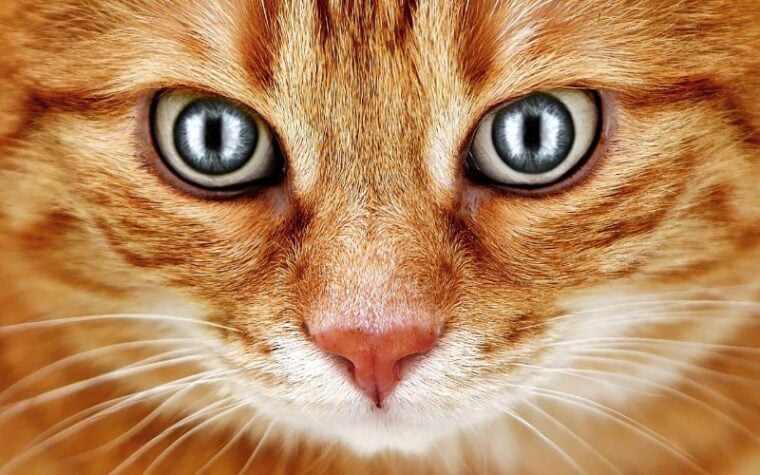
Cats have amazing vision, but while their vision is super sharp, cats’ eyes have a few limitations. Most cats can only see a limited range of colors, and kitties have trouble seeing close-up objects. When it comes to night vision, cats win the competition, hands down.
They can see a whopping 6 to 8 times better than humans in the dark, which makes sense, as cats prefer hunting during dusk and dawn. Read on to learn 10 fascinating facts about your cat’s eyes.
The 11 Most Fascinating Facts About Cats’ Eyes
1. Cats Have Amazing Night Vision
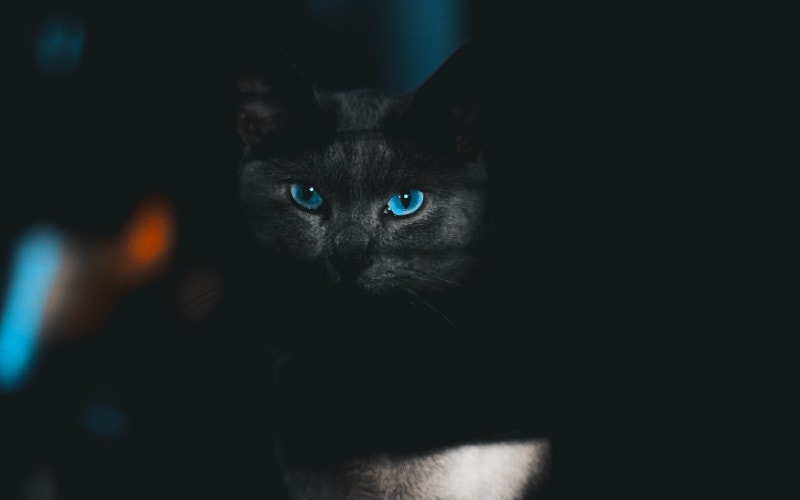
Cats’ pupils open further than ours, allowing more light to hit their retinas.
While they struggle a bit when there’s no light, the tapetum, which reflects light, gives cats exquisite visual acuity under low-light conditions. Feline eyes are also packed full of rods, which are cells sensitive to light. But this also means that cats struggle to see in bright environments.
2. They Can’t See Green and Red
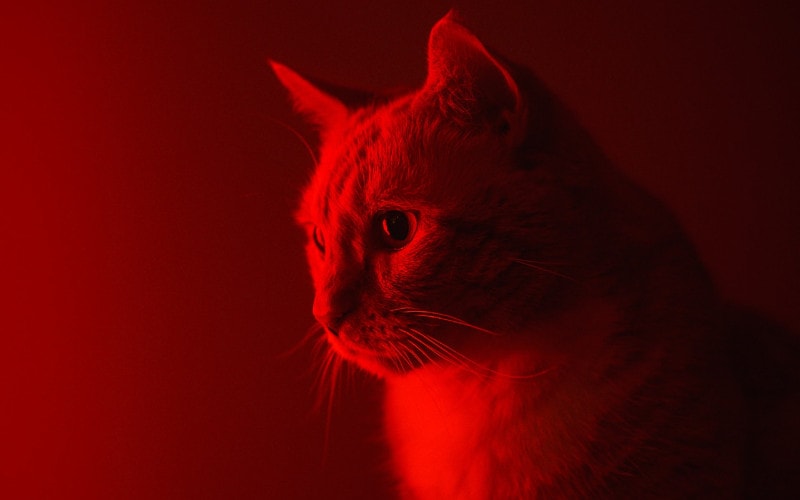
Feline eyes are good at picking up on contrast, but cats can’t see as many colors as humans. Cats’ eyes have two types of cones: the ocular cells responsible for picking up colors. Humans have far more cones, and our eyes also feature three types of these cells, allowing us to discern wide ranges of shades and colors.
But there are a few exceptions; kitties can see yellows and blues more distinctly than humans. Cats can generally see the same colors as a colorblind person.
3. Cats Can’t See Well Far Away or Close Up

Cats see best at middle distances. They struggle to see in the distance and up close. Feline vision gets hazy at distances over 20 feet; beyond that, cats have trouble making out details. Cats also have difficulty seeing things that are too close, but humans, on the other hand, see best at distances between 100 and 300 feet and have ocular muscles that permit close-up vision. Cats’ eyes have fewer muscles than ours, limiting their ability to adjust the shape of their ocular lenses to allow focusing on far away and nearby objects.
4. Cats Have Good Peripheral Vision

Cats’ eyes sit close to the sides of their heads, giving them outstanding peripheral vision. Human eyes are set much closer together, giving us an advantage in mid-distance vision. Cats’ eyes are optimized to pick up movement on the periphery of their vision, which gives them a serious leg up as stalking predators. Outstanding peripheral vision allows cats to “find” prey in a wide geographical area.
5. They’re Sensitive to Movement
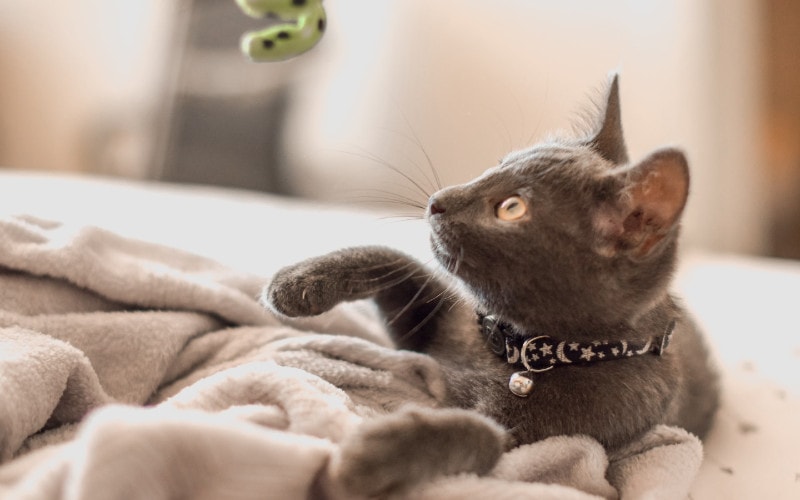
Cats’ eyes have several rods, almost 6 to 8 times as many as humans. Rods are photosensor cells that communicate visual stimuli to the brain, pick up movement, and optimize vision for low-light conditions. Because cats’ eyes have far more rods than ours, kitties can catch subtle movements, which gives them advantages when hunting prey.
6. Cats Can’t See Well in Bright Light

While cats have mind-blowing night vision, they don’t do so well in bright conditions. Humans have more ocular cones than cats, meaning we have far better daytime vision than cats. These extra cones are also responsible for the human ability to see more colors than cats.
But cats aren’t usually active during the day. They’re crepuscular animals that generally prefer being active around dawn and dusk. Most cats spend their afternoons napping and hanging out, which are activities where daytime vision isn’t really helpful.
7. They Use Their Ears to See Up Close

Cats see best at middle distances, with 20 feet being the sweet point. But how do cats catch mice if they can’t see close up? Cats use their hearing and sense of feel to seal the deal when hunting. They can hear sounds in a far larger range than humans and pinpoint where a sound is coming from with exquisite precision from 3 feet away. When cats are near their prey, they often hear their prey’s precise location. Sensitive paw pads and facial whiskers also help cats locate prey by picking up subtle vibrations.
8. They See You Through Smell

Cats often use their noses to do things we do with our eyes. Feline noses are 14 times more sensitive than humans! Cats use smell to communicate with other felines, and most outdoor cats spray to let other animals know a particular territory has already been claimed. Cats produce pheromones, which are full of information about their health.
They deposit these pheromones on you when they rub against your leg, and you get a dose when petting that adorable spot right behind your buddy’s ears. They pick up some of your scent in exchange. Cats recognize their humans and other family members mostly by this communal scent.
9. Cats Have Three Eyelids
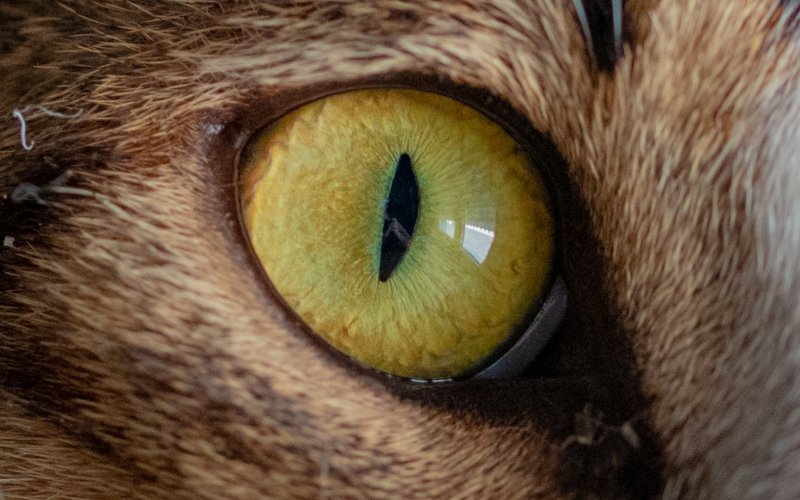
Cats and dogs both have three eyelids. Humans have two! Feline eyes have upper and lower eyelids, much like we do. But cats also have a third eyelid, the nictitating membrane, which is essentially a third interior eyelid. The nictitating membrane rests on the eye and below the lower eyelid. Look for a thin pink or gray membrane close to the interior corner of your pet’s eye.
10. Cats See Better in the Dark Than Dogs

Cats have several eye muscles, including ones that allow kitties to precisely control their pupils. Feline pupils have a wide range of motion, opening sky wide at night and closing to narrow protective slits during the day.
Dogs have fewer ocular muscles, so they’re less able than cats to adjust their pupils in response to varying light conditions. Round canine pupils keep the same shape no matter the light conditions, although they get larger at night and smaller when exposed to bright light.
11. White Cats With Blue Eyes are Often Deaf

White cats with blue eyes are often born deaf. About 40 percent of white heterochronic cats, those with one blue eye and another of a different color, are born deaf. The percentage of white cats with two blue eyes born deaf is even higher, around 65%–85%. Cats’ eyes come in a palate of colors. Most domestic felines have blue, green, orange, brown, or yellow eyes. Feral cats often have hazel eyes.
Summary
Cats’ eyes provide them with some evolutionary advantages when catching prey. Crepuscular predators prefer to be active and hunt during dusk and dawn. Feline eyes are almost perfectly optimized to deliver top performance during cats’ favorite hunting hours. Cats can see up to eight times better than humans at night. Kitties are also great at detecting subtle movements, as their eyes are optimized for contrast and range. Feline eyes are short on cones, so cats often struggle to see clearly in bright conditions and cannot see shades of red and green.
Featured Image Credit: Alexas_Fotos, Pixabay






